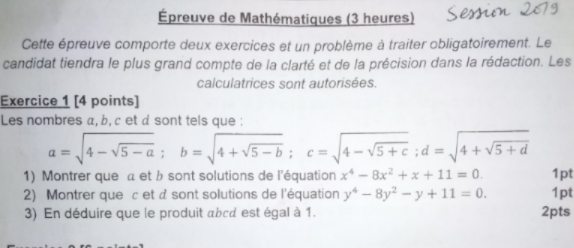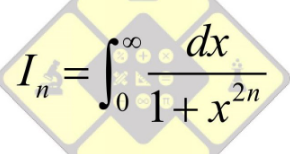
AllQuestion and Answers: Page 1203
Question Number 96231 Answers: 0 Comments: 1

Question Number 96222 Answers: 1 Comments: 2
Question Number 96220 Answers: 0 Comments: 0
$$\int\frac{{tan}\left({x}\right)}{{x}}{dx} \\ $$$$\int{x}\:{tan}\left({x}\right)\:{dx} \\ $$
Question Number 96217 Answers: 1 Comments: 0
Question Number 96211 Answers: 3 Comments: 0
Question Number 96497 Answers: 2 Comments: 0

Question Number 96200 Answers: 2 Comments: 0
Question Number 96198 Answers: 1 Comments: 0
Question Number 96197 Answers: 1 Comments: 0
Question Number 96196 Answers: 1 Comments: 0
Question Number 96195 Answers: 1 Comments: 0
Question Number 96194 Answers: 2 Comments: 0
Question Number 96193 Answers: 0 Comments: 0
Question Number 96192 Answers: 0 Comments: 2
Question Number 96189 Answers: 3 Comments: 0
Question Number 96185 Answers: 1 Comments: 0
Question Number 96182 Answers: 1 Comments: 0
$${x}^{\mathrm{2}} {y}''−{xy}'+\mathrm{y}\:=\:\mathrm{0}\: \\ $$
Question Number 96175 Answers: 1 Comments: 1
$$\int\frac{{dx}}{\sqrt{\mathrm{4}{x}^{\mathrm{2}} +\mathrm{4}{x}+\mathrm{3}}}=? \\ $$
Question Number 96171 Answers: 0 Comments: 2
Question Number 96161 Answers: 1 Comments: 1
Question Number 96155 Answers: 1 Comments: 4

Question Number 96148 Answers: 2 Comments: 14

Question Number 96140 Answers: 1 Comments: 5
Question Number 96138 Answers: 0 Comments: 1
$${xy}'\:+\:{y}^{\mathrm{2}} \:=\:{x}^{\mathrm{2}} {e}^{{x}} \: \\ $$
Question Number 96135 Answers: 0 Comments: 5

Question Number 96128 Answers: 1 Comments: 0
Pg 1198 Pg 1199 Pg 1200 Pg 1201 Pg 1202 Pg 1203 Pg 1204 Pg 1205 Pg 1206 Pg 1207
